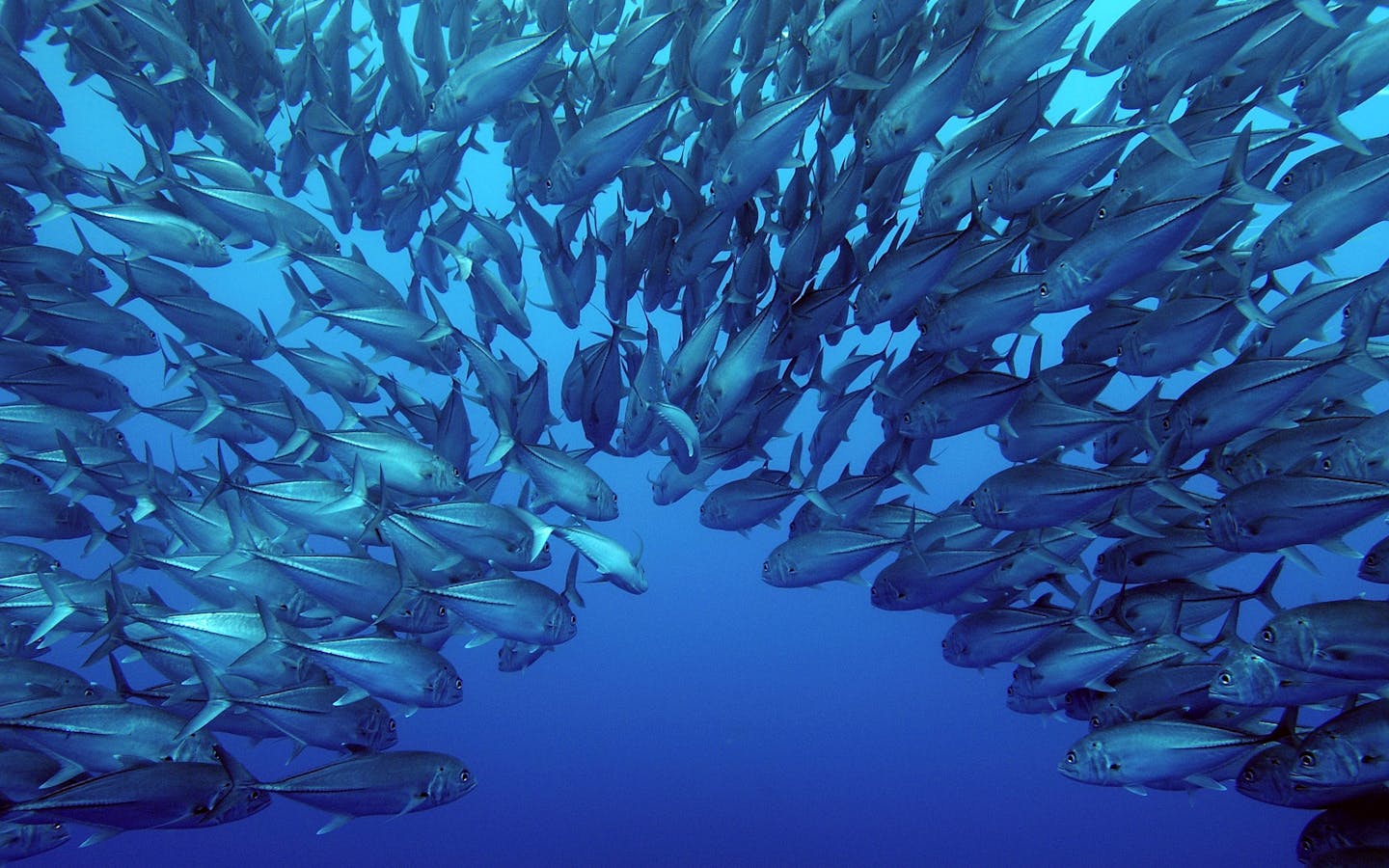The Eastern Tropical Pacific is a swath of the Pacific Ocean extending from Mexico to Peru. This area provides a safe haven for wildlife like hammerhead sharks, giant manta rays, green sea turtles and the only penguin species in the Northern Hemisphere.
Conservation International's work in this area dates back to 2004, when we partnered with the governments of Costa Rica, Panama, Colombia and Ecuador to protect and expand their separate marine protected areas into a unified “seascape” — a vast network of connected habitats where fish populations, migratory marine species and the people whose livelihoods depend on the sea and biodiversity could thrive. Since then, that seascape has grown to include over 100 partners, working together to manage more than 77 separate marine protected areas — and protecting globally important sites like the Galápagos Islands and one of the busiest marine migratory routes in the world, traversed by sharks, turtles, whales and seabirds.
Now, Conservation International is expanding its seascape approach to include the full Eastern Tropical Pacific, a massive area that covers nearly 21 million square kilometers (8.1 million square miles) — equivalent to the land areas of Canada, China and India combined.
Why is the Eastern Tropical Pacific important?
Over 600,000 people are employed by fisheries within the Eastern Tropical Pacific. The average catch value of the 10 most commercially fished species is US $2.7 billion per year. In addition, nature-based tourism plays a fundamental socio-economic role in places like the Galápagos Islands, Mexico and Costa Rica.
In recent history, the Eastern Tropical Pacific has averaged 11 million tons annually from commercial fisheries — about 10 percent of global catch volume. This includes one of the most globally important fishing areas for yellowfin, bigeye and skipjack tuna.
Over 600,000 people in the region are in fishery associated jobs.
The region’s extensive coastal mangrove forests provide habitat for mollusk and crustacean fisheries important to coastal communities’ livelihood and food security.
The island ecosystems of the Eastern Tropical Pacific include marine life found nowhere else on Earth, including endangered and vulnerable species, like migratory sharks, sea turtles, whales and seabirds.
Over 9,000 square kilometers of mangrove forests line the coasts of the Eastern Tropical Pacific — an area equivalent to the land area of Puerto Rico. These coastal ecosystems store immense amounts of climate-warming carbon and protect communities from storm surges and coastal erosion.
Our Goals
Conservation International is working to create a continuous, protected marine corridor across the entire Eastern Tropical Pacific by helping countries and communities balance ocean protection and economic production.
By 2025, conserve or improve the management of at least 2 million square kilometers (770,000 square miles).
By 2025, place at least five fisheries under improved management.
Our solution
Working across an ocean area this big — and protecting it from shared threats like climate change, biodiversity loss and unsustainable fishing — is an enormous challenge. Nature doesn’t adhere to man-made boundaries. That’s where Conservation International’s seascape approach comes in — it builds coalitions to improve ocean governance in ways that protect marine life and promote human well-being.
We’re helping countries undertake transboundary conservation — co-managing shared natural resources and marine biodiversity across borders for the benefit of all. Since we began work in the Eastern Tropical Pacific ocean in 2004, we’ve supported the creation or expansion of more than 20 marine protected areas. And we’re working around the region to restore critical coastal areas, end destructive fishing practices such as overfishing and trawling, and coordinate cooperation among the regional governments to create a more sustainable Pacific Ocean.
Increase access to science-based solutions
Building action among stakeholders at a regional level requires a mutual understanding of the problem and its solutions. We are fostering a shared understanding of threats to marine ecosystems, regional biodiversity, climate impacts and resilience, and ecosystem services across the Eastern Tropical Pacific.
Inform and advance regional policy
We support dialogue and cooperation between stakeholders to develop consistent science and policy frameworks at a regional scale.
Strengthen regional alliances
We are increasing collaboration within the Eastern Tropical Pacific, providing technical expertise to participating countries and supporting the implementation of regional policies that help to strengthen marine protected area management.
Apply innovative tools for large-scale ocean management
By 2025, we will work with partners to help create, expand or improve management of more than two regionally-connected marine protected areas.
Promote conservation-based investment across the region
We help national and local governments engage in dialogue with regional industries, such as transportation, carbon markets, cruise tourism, seafood or port infrastructure.

